
Kayak fishing is one of Australia’s fastest-growing outdoor activities—but it comes with a unique set of challenges. Whether you’re paddling quiet estuaries or heading offshore for bigger catches, getting it wrong can mean lost gear, missed fish, or worse—danger on the water.
In this guide, we break down the top 10 mistakes kayak anglers make—from overlooked safety essentials to gear mishaps and simple planning errors. Avoiding these pitfalls can make all the difference between a frustrating trip and a successful, safe day on the water.
One of the most common errors new kayak anglers make is overestimating how much gear their vessel can handle. It’s easy to get carried away—packing extra rods, tackle boxes, camera gear, and even a cooler full of snacks—but every additional item adds to the total load and affects how your kayak sits in the water.
Check the manufacturer’s weight capacity (usually listed in kilograms), and keep in mind this includes **your own body weight plus everything else**. An overloaded kayak won’t just be harder to paddle—it’ll sit lower in the water, handle poorly, and be more likely to tip in rough conditions. Even if you’re under the weight limit, poor weight distribution can cause tracking issues or make re-entry difficult if you fall out.
Pro Tip: Pack heavy gear like batteries or fishfinder units low and centred to maintain your kayak’s stability. Use dry bags and milk crates to stay organised and limit loose items rolling around.
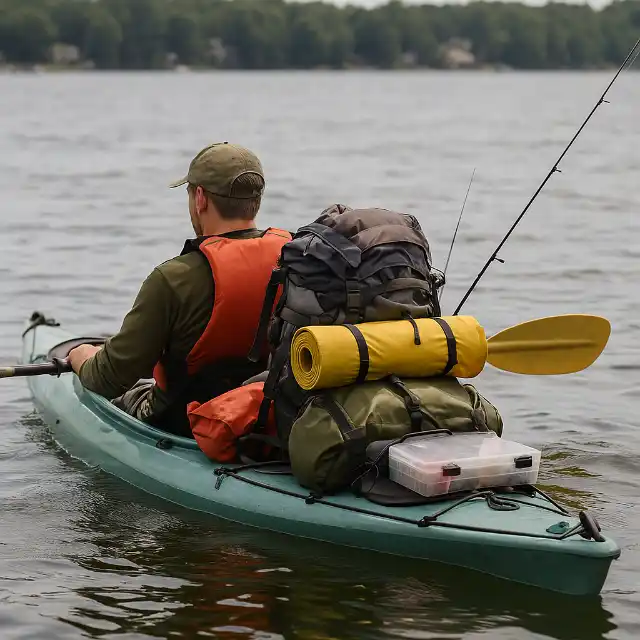
It’s tempting to head out whenever you have free time, but ignoring marine forecasts can quickly turn a peaceful session into a survival scenario. Wind, swell, rain, and tide changes are all amplified when you’re in a small, low-profile craft like a kayak. Failing to check conditions—or not understanding how they affect your chosen launch site—puts you and your gear at risk.
Use the Bureau of Meteorology’s marine forecast and tide tables to plan your trip. Look for wind direction, strength, wave height, and any warnings. Even a moderate breeze can make paddling back a struggle, especially on open water or estuaries with current.
Pro Tip: Keep a waterproof floatable VHF radio with you and let someone know your plan. Many kayakers also carry a mobile phone in a dry pouch or use location-sharing apps in case they get delayed or need help.

This one’s a deal-breaker. Wearing a properly fitted PFD (personal flotation device) is non-negotiable in kayak fishing. Even experienced swimmers can get knocked out, tangled in gear, or fatigued while trying to re-enter a kayak in choppy water. A capsize is rarely planned—and when it happens, a PFD could mean the difference between life and death.
Modern kayak-specific PFDs are lightweight, breathable, and designed with fishing in mind—many even have storage pockets and rod holders. There’s simply no excuse not to wear one every time you’re on the water.
Pro Tip: Try on several models before buying, and look for one that doesn’t restrict your paddling stroke. If you fish in warm weather, go for a mesh-back model for better airflow and comfort.

Anchoring seems simple—until you get blown into rocks or can’t retrieve your anchor. Dropping your anchor in the wrong place, using rope that’s too short, or not accounting for current and wind can lead to dangerous drift or capsizing. Kayaks behave very differently from boats when anchored, especially in choppy conditions.
Use a proper kayak anchor system with a trolley or quick-release carabiner. Always drop your anchor from the bow or stern—not the side—to avoid tipping. In stronger currents or deeper water, more anchor line (called “scope”) is needed to hold position.
Pro Tip: Practice deploying and retrieving your anchor in calm, shallow water. Always keep a knife within reach to cut the line in an emergency.
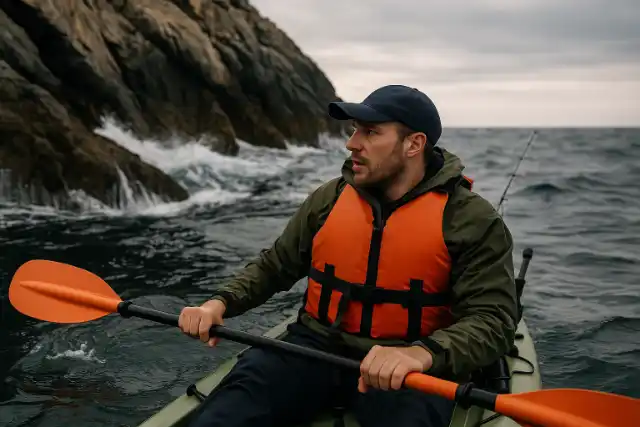
Flip your kayak once, and you’ll never leave gear unsecured again. Rods, tackle boxes, phones, dry bags—anything not tied down or buoyant can disappear to the bottom in seconds. Even stable kayaks can flip in unexpected waves or when re-entering from the water.
Use rod leashes, tie-down straps, or bungee cords for all essential gear. Keep electronics and valuables in floatable dry bags or attach foam floats. You’ll fish more confidently knowing you won’t lose hundreds of dollars in a single mishap.
Pro Tip: Simulate a capsize on calm water and see what you lose. It’s a humbling and very effective test.
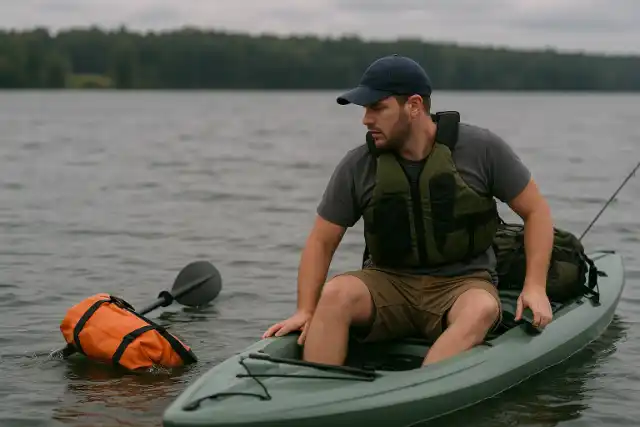
Standing up to cast or shift position in a kayak that’s not designed for it is asking for a swim. Not all fishing kayaks have the width or hull shape needed for stable standing. Combine that with the natural movements of casting, and it’s a recipe for a tip-over.
If you want to stand and fish, buy a kayak built for it. Even then, test your balance in calm conditions before going full send. Always keep your feet planted shoulder-width apart, knees slightly bent, and body low when shifting weight.
Pro Tip: Some paddlers use a push pole or paddle to balance when standing. You can also install stand-assist straps to help you rise safely.
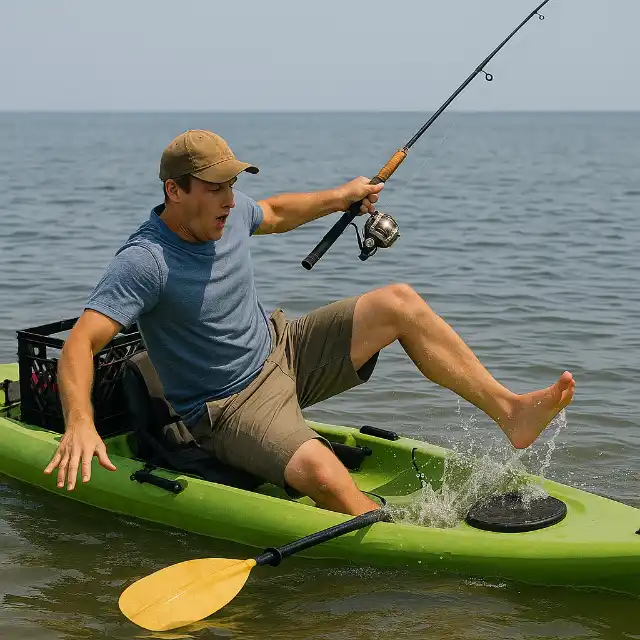
One of a kayak’s biggest advantages is stealth. But clanging rods, dropping anchors, or even banging your paddle against the hull can scare fish away instantly—especially in shallow or clear water. You might not even realise how much noise you’re making until it costs you a bite.
Use rubber padding or foam to soften noise where gear contacts the kayak. Secure paddle clips to keep your blades from knocking. If you’re dropping anchor, do it slowly and avoid sudden splashes.
Pro Tip: Become the Ninja! Move slowly and deliberately, especially when approaching your target area. Treat every sound like it’s amplified underwater—because it is.
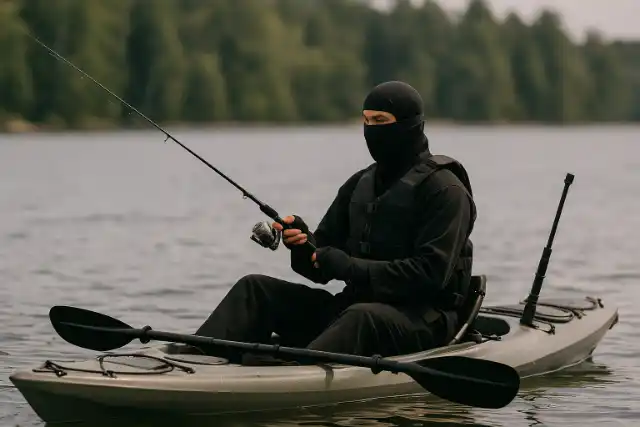
If your paddle floats away and you don’t have a backup or a leash, you’re in serious trouble. A drifting paddle in wind or current can vanish quickly, leaving you stranded and reliant on your hands or makeshift gear to move your kayak.
A paddle leash is a low-cost safety item every kayak angler should carry. Some even keep a compact spare paddle stashed behind their seat or in a front hatch. It’s cheap insurance for something you absolutely can’t do without.
Pro Tip: Clip your paddle leash to a secure point on the kayak—not to your body—so it doesn’t interfere with movement or tangle in your feet.
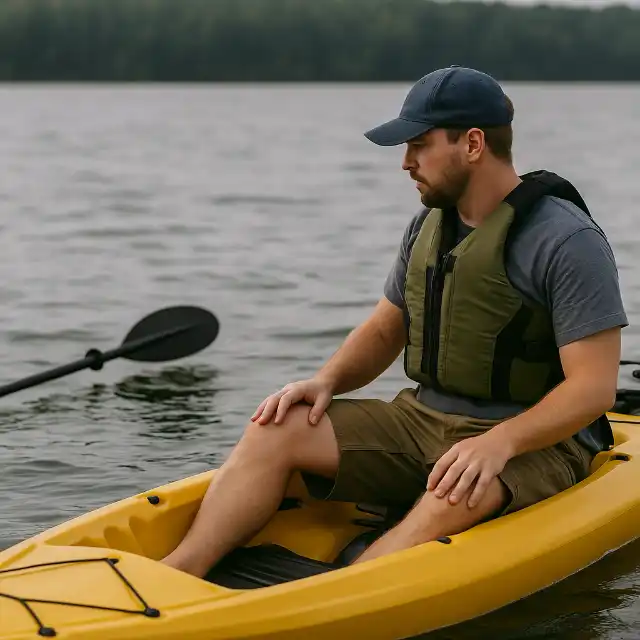
Ever heard the splash of a rod going overboard and watched it disappear instantly? It happens more than you’d think. Whether you’re reaching for gear, landing a fish, or just bumped the handle with your elbow—unsecured rods are one of the most common losses on the water.
Use rod leashes, tethers, or DIY pool noodle floats to keep your setups safe. Some anglers also use rod holders with locking grips for extra peace of mind in choppy conditions.
Pro Tip: Mark your rods with bright tape or reflective stickers so you can spot them quickly if they hit the water.
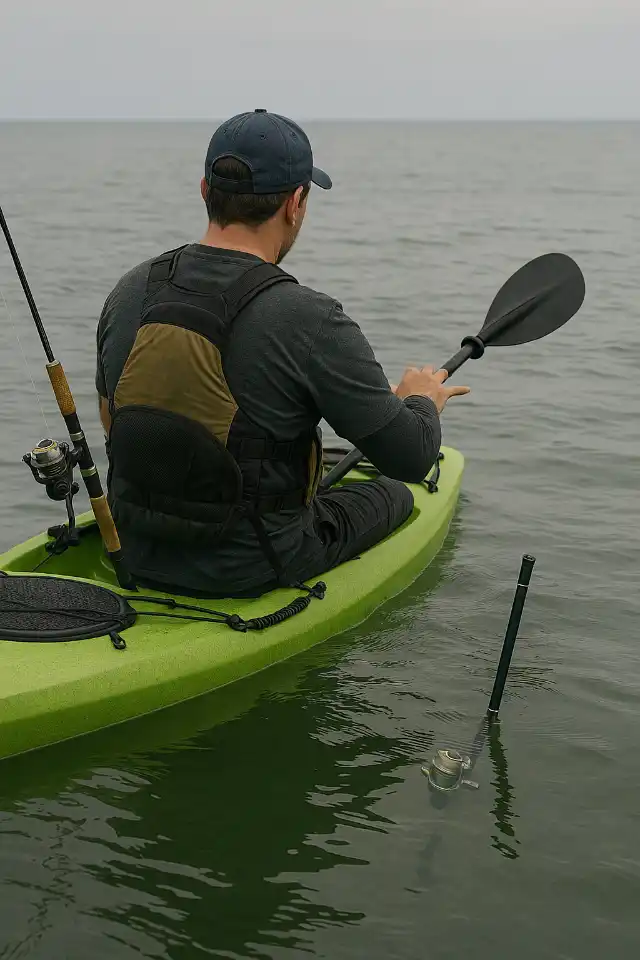
Many kayak anglers assume they’ll be able to get back into their kayak if they fall out—but have never actually tried it. Spoiler: it’s much harder than it looks, especially in deep water, with waves, wind, and gear in the way.
Practice re-entering your kayak in controlled conditions, ideally with a buddy nearby. Learn to approach from the side, kick with your legs, and hoist your body across the kayak while keeping your centre of gravity low. Sit-on-top kayaks are easier to re-enter, but still require technique and core strength.
Pro Tip: Attach a stirrup or re-entry strap to give your foot a boost if needed. Aftermarket rescue stirrups can fold up and stow neatly when not in use.
Check this list of short videos for guides on how to get back into your kayak.

Kayak fishing is incredibly rewarding, but it demands respect for safety, preparation, and self-awareness. Avoiding these common mistakes will not only keep you safer on the water, but also help you fish more effectively, confidently, and enjoyably. The best part? Most of these tips require very little money to implement—just a bit of planning and a willingness to learn.
If you’re new to the sport, take the time to build your skills in calm, familiar waters. If you’re more experienced, don’t be afraid to revisit the basics—you might catch something you’ve overlooked. Tight lines!


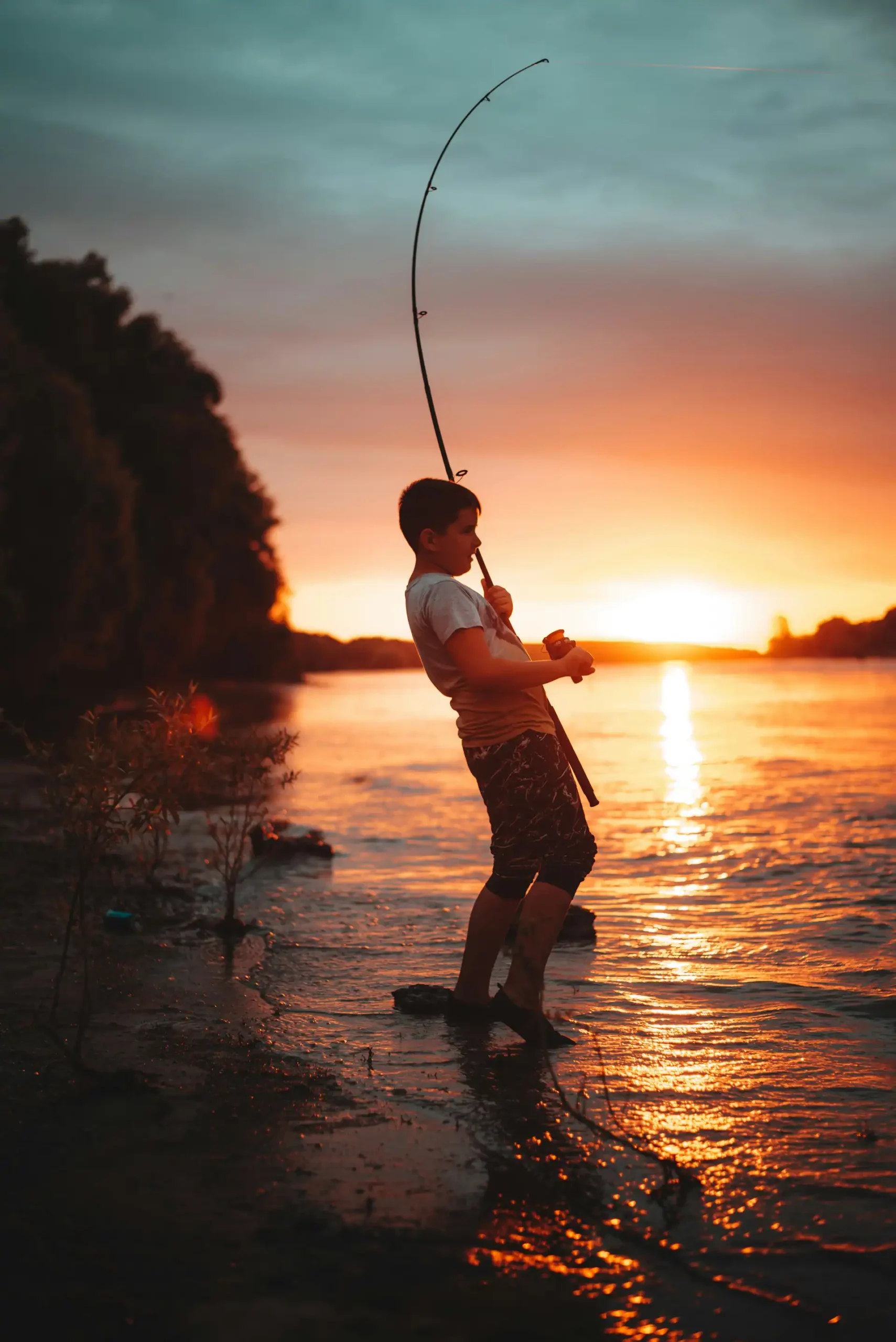
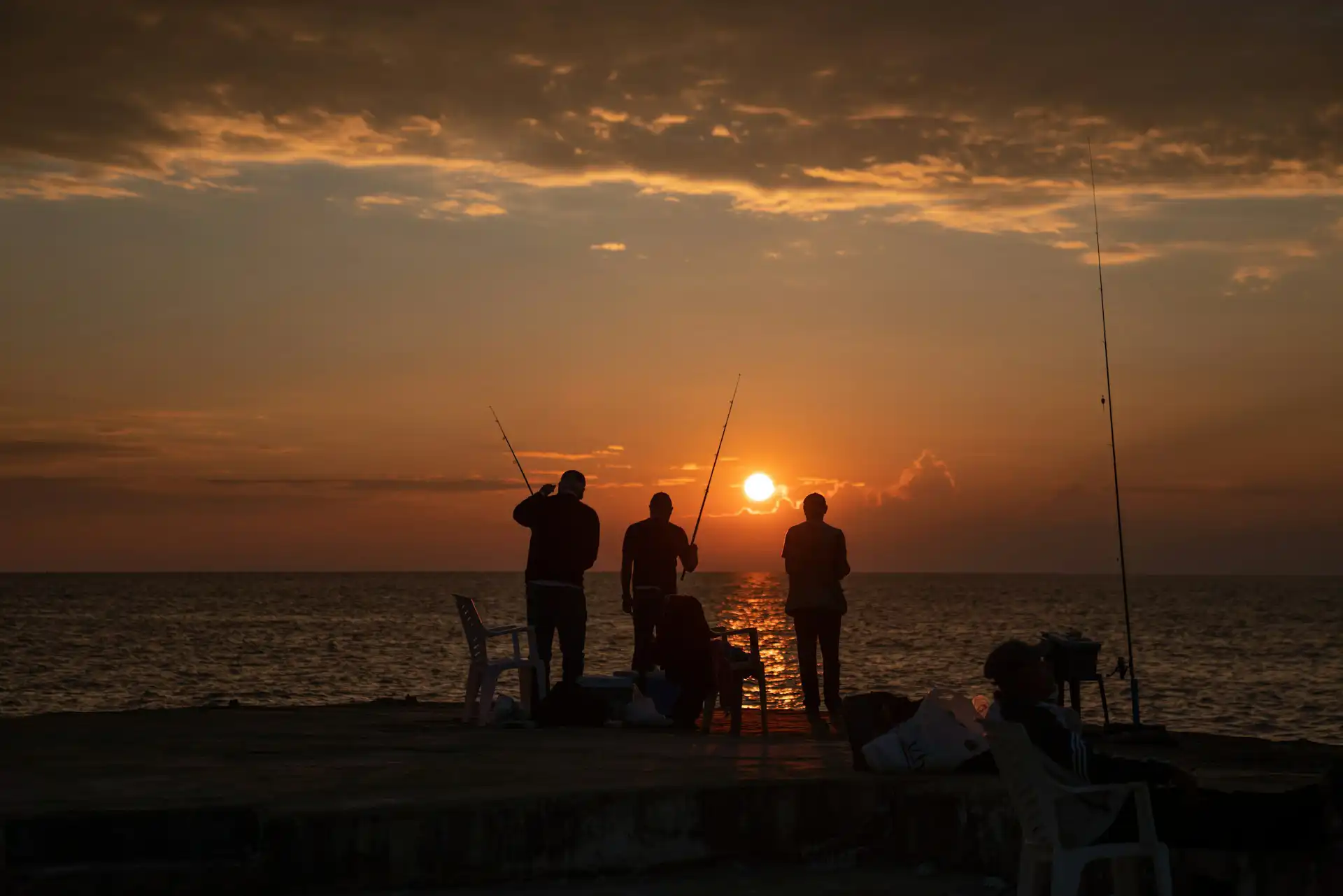

Affiliate Disclosure: We are a participant in the Amazon Services LLC Associates Program, an affiliate advertising program designed to provide a means for sites to earn advertising fees by linking to Amazon.com. As an Amazon Associate, We earn from qualifying purchases. Your support helps us keep this site running—thank you!